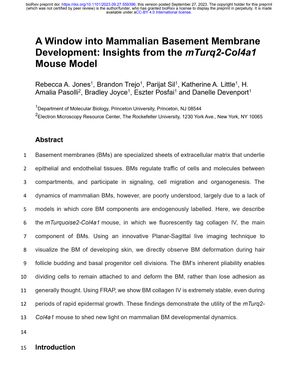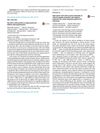A Window into Mammalian Basement Membrane Development: Insights from the mTurq2-Col4a1 Mouse Model
September 2023
in “
bioRxiv (Cold Spring Harbor Laboratory)
”

TLDR The mTurq2-Col4a1 mouse model shows that cells can divide while attached to stable basement membranes during development.
The mTurq2-Col4a1 mouse model, which features a fluorescently tagged collagen IV—a primary component of basement membranes (BMs)—has provided new insights into the dynamics of mammalian BM development. By employing Planar-Sagittal live imaging, researchers observed BM deformation during hair follicle formation and cell divisions of basal progenitors, revealing that cells can divide and remain attached to the BM, challenging the previous belief that they lose adhesion. Additionally, fluorescence recovery after photobleaching (FRAP) experiments indicated that collagen IV within the BM is highly stable, even during rapid epidermal growth. These findings highlight the mTurq2-Col4a1 mouse as a valuable tool for studying BM behavior in mammalian organogenesis.

